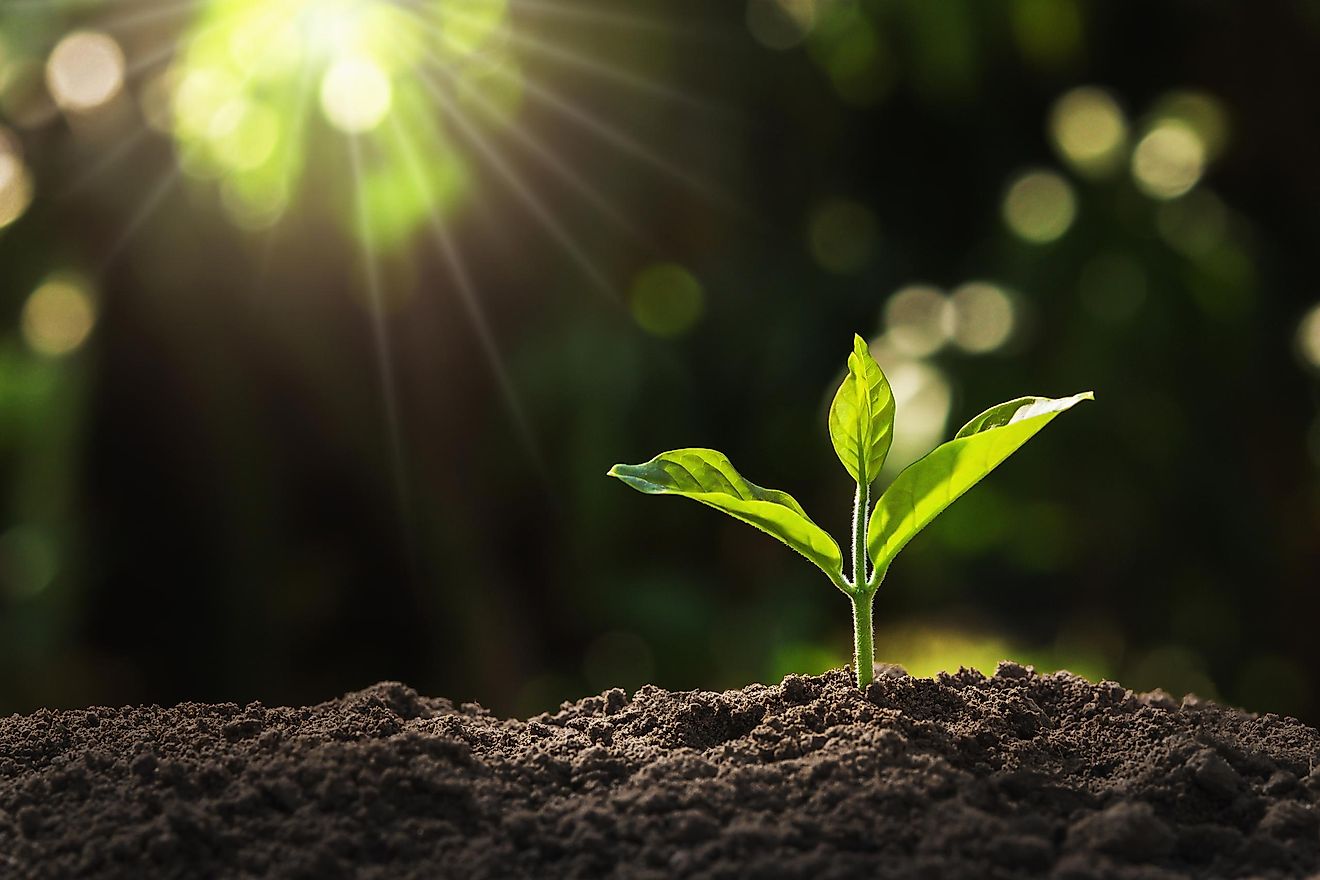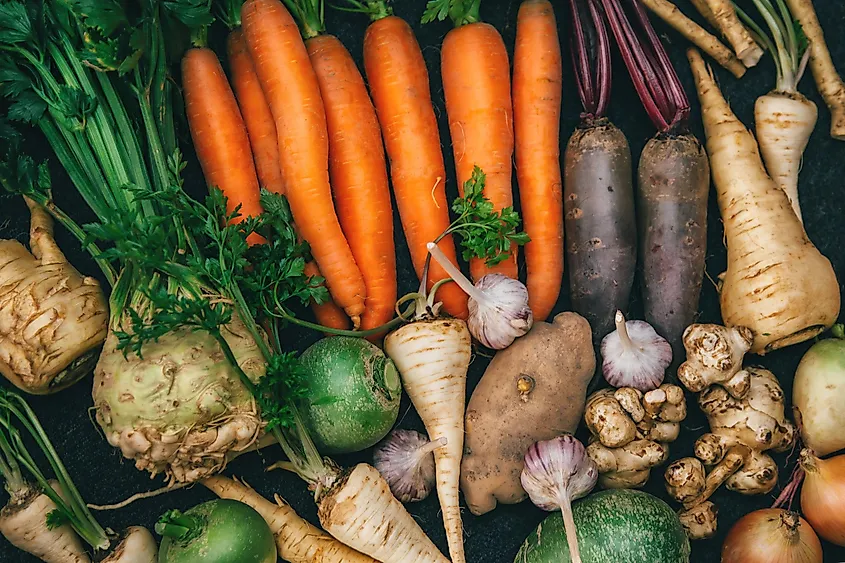Where Do Plants Store Their Food?

- Plants mostly store their food sources in their roots.
- Plants generate their own food through photosynthesis.
- The survival of most living species is reliant on plants.
Plants are vital to the circle of life for all organisms on Earth, providing food and oxygen for the survival of most species. Simple sugars like glucose and fructose and starches are stored within the plant to satisfy its own needs and also give sustenance to animal life forms, including human beings.
Unlike animal species, plants are capable of producing their own food and are entirely self-sustaining, making and storing their own sources of energy to promote growth at all stages of a plant's life and develop its structures.
How do plants make food?
The secret ingredient to plant food production is chlorophyll, located in the chloroplasts, found in the leaves. Through photosynthesis, chlorophyll helps convert water, sunlight, and carbon dioxide captured by chloroplasts into sugars to be used immediately or stored. Glucose is the simple sugar manufactured through photosynthesis and is metabolized into different energy forms depending on the specific needs of the plant.
The plant moves water from root to leaf through the xylem, a series of small branching tubes, and after photosynthesis has occurred the sugars created are mixed with water absorbed from the plant's root system and moved through the plant via the phloem. The phloem is responsible for transporting about 80 percent of dissolved sugars created through photosynthesis from leaves to various locations throughout the plant, including the roots and tubers.
Where do plants store their food?
Glucose and fructose
Sugars like glucose and fructose, created through photosynthesis, are typically found in the stalks and fruits of plants, respectively. Glucose, a hexagonal ring of six carbons, is typically found in the stem and is transported through the plant with water and other minerals to encourage plant growth, whereas fructose is the natural sugar found in fruits and flowers.
This carbohydrate, sometimes known as dextrose, is one of the primary molecules responsible for energy in both plants and animals. It is often found in the sap of plants, similar to a human being's blood sugar. Fructose, as its name indicates, is found in fruit and the monosaccharide is often called fruit sugar rather than its scientific name. It can also be found in honey and is classified as the sweetest of all natural sugars.

Starch
When a plant produces glucose in excess, it can be converted into starch and stored, usually in the roots and seeds of the plant, where it is kept as a long-term energy reserve for the plant. Typical starch components found in plants are amylose, which is linear in structure, and amylopectin, which is branched. Both these components are polysaccharides comprised of thousands of sugar molecules and are stored in granules called plastids within plant cells.
Starches are found in seeds because they help feed plants in their embryonic stages, but are most often located in roots. Trees store their food in the tissues of trunks and branches in order to sustain themselves over winter when their leaves have dropped off and food cannot be generated through photosynthesis.
Root vegetables like beets, radishes, carrots, and potatoes, are starch-laden because the plants keep their energy stores underground, out of sight of animals hunting for a meal. Soil also provides a stable environment for energy storage, as it is not as affected by changes in weather, which is why perennial plants tend to store starch below ground, where it can maintain its energy source through winter months until blooming in spring. Plant starch has become a major part of the human diet and is sought after by wildlife as well.
Plants also store starches for future food creation, to provide sustenance in case of cloudier weather when photosynthesis cannot be used to generate glucose. In this case, the plant metabolizes starches in its roots to produce glucose and continue producing energy.











